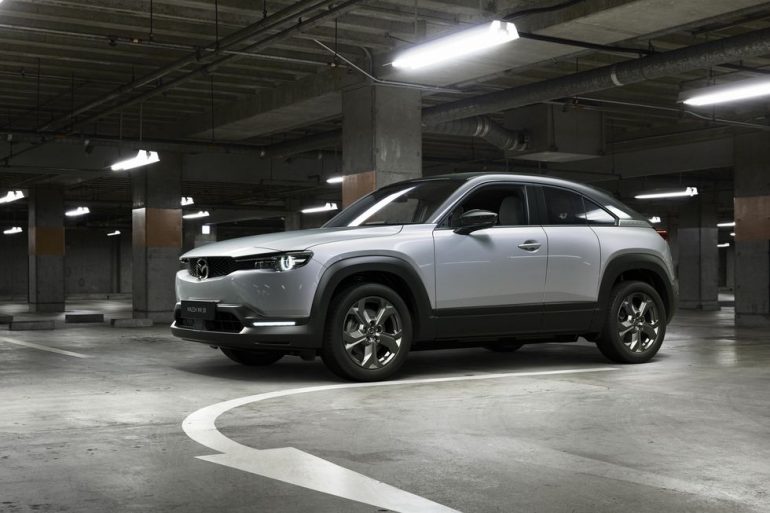
We knew it was coming and from the initial scrutiny from many we believe Mazda knew the time would come to axe the MX-30. Mazda has announced its decision to discontinue the MX-30 electric crossover after the 2023 model year. Instead, Mazda will shift its focus to plug-in hybrid models, such as the 2024 CX-90 PHEV and the eventual CX-70 PHEV, as well as non-plug-in hybrids like the CX-50 Hybrid. Despite being available for sale in California for three model years, the MX-30 failed to make a significant impact, with only 181 units sold in 2021, 324 in 2022, and a meager 66 through June of this year. These modest sales figures were seemingly anticipated by Mazda, as they reported a sold-out production run in the U.S. for the 2022 model year.
One factor that likely contributed to the lackluster reception of the MX-30 was its underwhelming range. Equipped with a 35.5-kWh battery and an EPA-rated range of 100 miles, the electric crossover faced stiff competition from rivals with better performance and more extended driving ranges. Moreover, its starting price of $35,385 after destination was considerably higher than competing models like the Chevrolet Bolt and Bolt EUV, which also retained the benefit of a $7,500 federal tax credit—a perk not available to Mazda’s electric offering. The Bolts surpassed the MX-30 in terms of horsepower, acceleration, and range, making the latter a less attractive option for eco-conscious consumers.
Also, don’t forget that you can get discounted new car pricing with a free quote through qualified local dealer partners.
Nevertheless, the Mazda MX-30 does possess its unique appeal, particularly in its styling and material quality. Although the U.S. market will bid farewell to the full-electric version, some other markets will continue to enjoy a redesigned MX-30 R-EV with an 830-cc range-extending rotary engine. With a reduced battery capacity of 17.8 kWh, the R-EV is estimated to have 85 kilometers of pure-electric driving range on the WLTP cycle—roughly half of what the U.S. electric version could achieve.
Mazda’s future, however, holds promise for a more substantial battery-electric push, as the company plans to develop two EV lines—one based on an existing architecture, and another built on an entirely new platform. There are reports of a potential collaboration with Toyota, providing access to a new EV architecture designed to achieve a remarkable range of over 745 miles when powered by next-gen battery technology. As Mazda ventures into this electrifying future, the automotive landscape is sure to witness exciting innovations and a renewed focus on sustainable mobility.